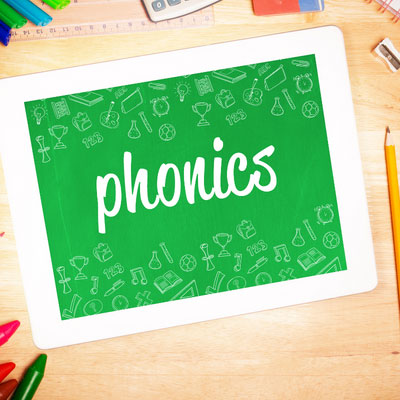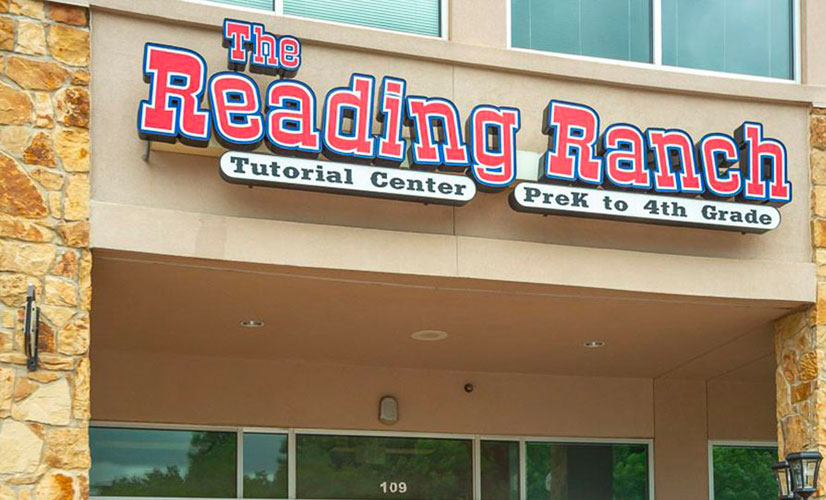Explicit Systematic Phonics Instruction

What is explicit, systematic instruction?
Teaching in a systematic way means using a proper scope and sequence with the curriculum. The hallmark of an explicit, systematic phonics approach is the direct teaching of letter-sound relationships and the direct teaching of letter shapes. This type of instruction is most effective when introduced early.
The other key component here is “explicit,” which means teachers directly tell their students about what correlation there might exist between one letter or group of letters (such as ‘th’)and its corresponding spelling word. Then these concepts are followed up with practice and drills to reinforce the lesson before moving on to the next idea. This can only happen if they start with simple lessons on the most fundamental sounds! The material must be presented systematically, i.e., the proper “scope and sequence.
Systematic and explicit phonics instruction is more effective than non-systematic and implicit instruction.
Systematic phonics instruction results in more growth in the ability to decode words than non-systematic or implicit phonics instruction. The effects of explicit, systematic phonics instruction on children’s reading and decoding skills extend to reading comprehension and accelerate the learning curve versus other non-scientific methods. The correct scope and sequence are critical to children’s understanding and success. Teaching concepts in scattered and unstructured ways leads to confusion and little learning.
Programs using these methods typically have small books and readers reinforcing the lesson. Children learn to decode words quickly as they receive practice and instruction along with the lesson. The research findings show that the ability to decode words is key to the knowledge, skills, and abilities needed for reading. Phonics instruction can be the basis for an entire reading program for beginning readers.
The reading and oral texts students encounter as they learn to read and spell words are presented in a correct sequence. Hence, the students progress rapidly and consistently build on previously known concepts.
Orthographic mapping: teaching phonics to the point of automaticity
Orthographic mapping is a process that uses letter-sound correspondences to establish long-term memory for printed words. Once a reader has seen a word several times, its string of letters becomes anchored to its pronunciation in long-term memory. Orthographic mapping saves time and mental resources by allowing automatic retrieval.
Orthographic mapping develops a reader’s sight word vocabulary; this makes reading words seem nearly effortless. It seems they read the word as a whole. While it may seem that we are reading without effort or attention, our brain is processing every single letter and does not look at the entire word shape. Good readers take in the letter so fast it is imperceptible. However, when we come to a new word we are unfamiliar with, we revert to our decoding and phonics skills to “map” the word for future retrieval.

Systematic and explicit phonics instruction significantly improves kindergarten and first-grade children’s word recognition and spelling
Systematic phonics instruction results in more effective reading comprehension and spelling. The ability to decode words accurately and to decode words word for word increases in kindergarten and first-grade students when they receive systematic phonics instruction and when they learn to decode words using phonetic principles.
Explicit systematic phonics instruction may also improve children’s reading comprehension
In addition to teaching children how to read individual words, explicit, systematic phonics instruction also helps them to develop critical reading comprehension skills. Children learn to understand unfamiliar words’ meanings and identify the main ideas in a text by breaking down words into their component parts. In addition, phonics instruction helps children to develop fluency, which is essential for reading comprehension. When children can read quickly and accurately, they can better focus on the meaning of the text rather than on decoding individual words. As a result, explicit, systematic phonics instruction is essential for helping children become skilled readers.
Phonics instruction is most effective when introduced early
Phonics instruction should emphasize a planned, sequential set of phonic elements, including both words and part words. The collection includes all of the powerful sounds/phonemes of the word (e.g., letter combinations, vowel combinations). In contrast, a “rime-and-time” approach, where students learn one word at a time or through a random selection, is not systematic or explicit instruction in phonics.

Is phonics instruction more effective when students are taught individually, in small groups, or in large classes?
There is evidence to back up the claim that individual/small group phonics instruction is more effective. Still, creative teachers are always able to find a way to create the necessary environment for their students.
Doesn’t phonics instruction get in the way of reading comprehension?
Phonics instruction doesn’t get in the way of reading comprehension. Reading involves decoding words and understanding their meaning and pronunciation. To say that phonics somehow interferes with comprehension is meaningless and simply wrong.
How does systematic and explicit phonics instruction affect the reading and spelling of older students?
Research tells us that the best readers have a strong understanding and use phonics as a major tool in their reading efforts for their entire lives. Effective readers and spellers need reading instruction that is based on phonics. The ability to read the words in the text and decode word meanings is highly related to reading comprehension. For that, students must be able to decode the meaning of word parts.
How long should phonics be taught?
When it comes to teaching phonics, there is no one-size-fits-all answer. The amount of time that should be devoted to phonics instruction will vary depending on the needs of the individual child. For some children, a brief introduction to phonics may be all that is needed to develop reading skills. Others may require a more prolonged and intense period of instruction. The important thing is to ensure that phonics instruction is tailored to meet the needs of each individual child.
Although there is no single answer to the question of how long phonics should be taught, most experts agree that it is an important part of early reading instruction. In general, kindergarten and first grade are the most crucial years for learning phonics, as this is when children are first introduced to reading. However, many children may benefit from continuing to learn phonics into second grade and beyond. Ultimately, the decision of how long to teach phonics depends on the needs of individual students.
The Reading Ranch Method™
At The Reading Ranch®, we pride ourselves on having a research-backed Multisensory Reading program that teaches children using explicit systematic phonics. If you’re looking for a program to teach these concepts to your child, we offer programs for reading, writing, and comprehension for PreK-6th grade students. We offer either online or in-person programs, we feel confident we have something just right for every family. Contact us today for a free sample class


